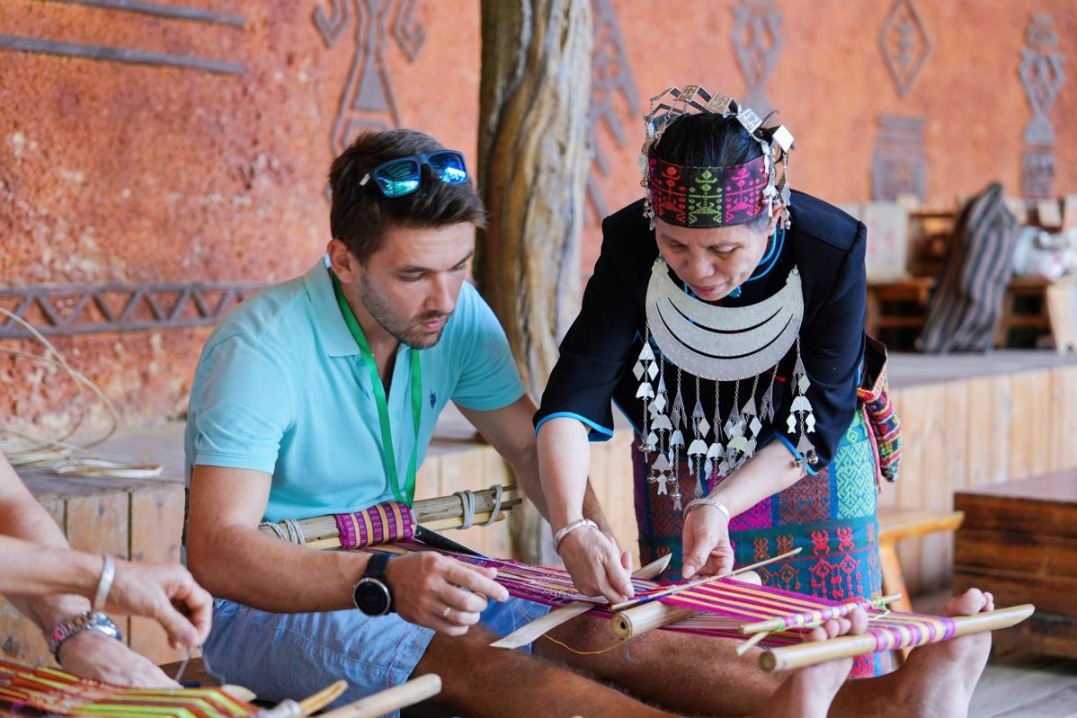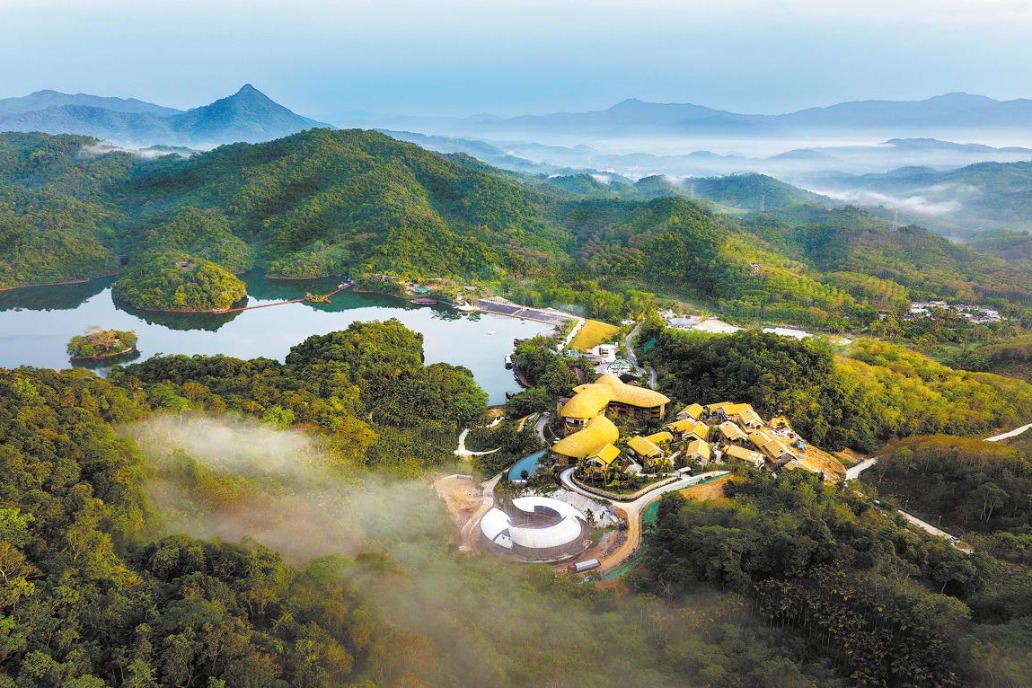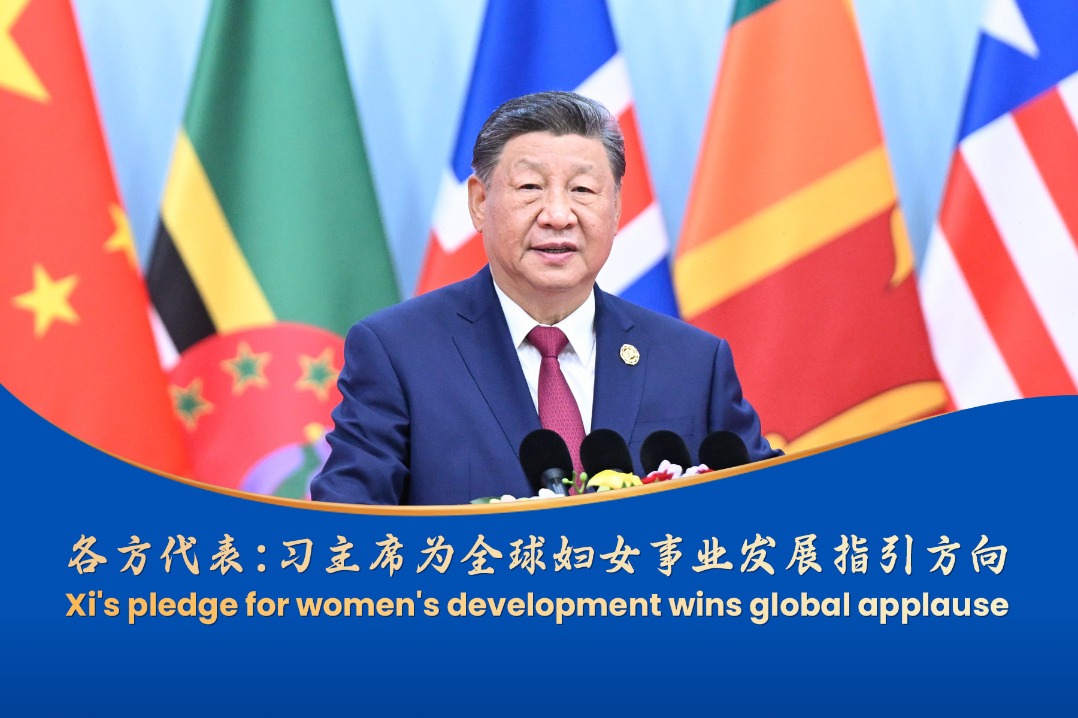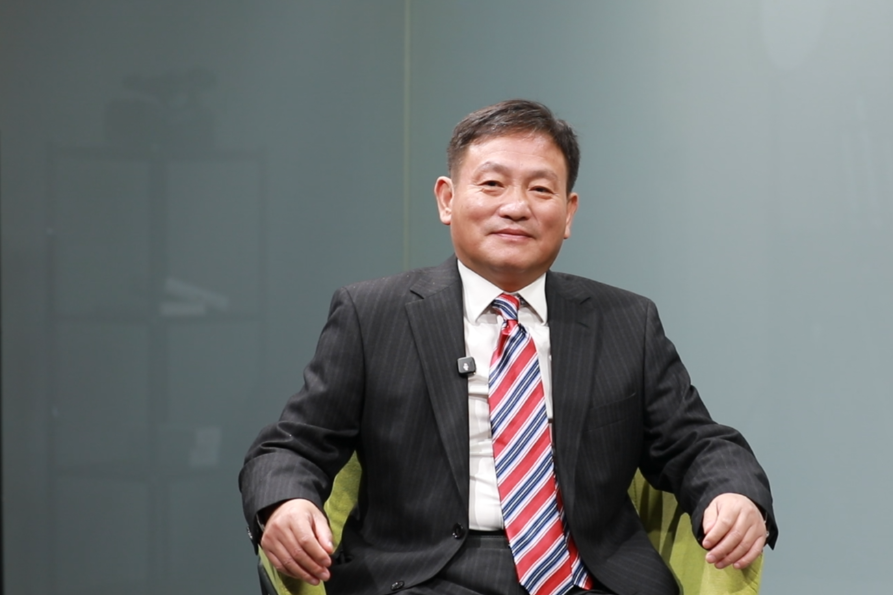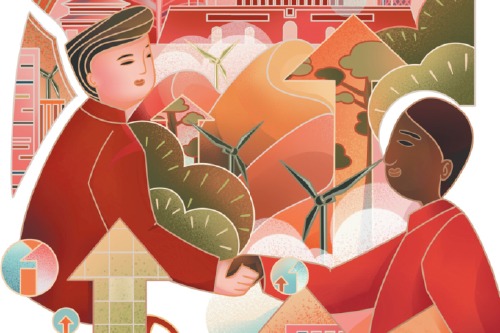Tailored solutions


The Belt and Road Initiative is helping forge a new model for a green future in Ethiopia
At dawn, the steam rising from the Great Rift Valley meets the sound of Chinese-built wind turbines and the quiet glint of new solar farms. The first light over Ethiopia's Great Rift Valley paints a picture of transition. This is more than just an evolving energy grid; it's a dynamic laboratory at the heart of Africa.
Ethiopia, fueled by its ambitious Climate-Resilient Green Economy (CRGE) strategy, seeks to leapfrog into sustainable development. China's Belt and Road Initiative brings capital, technology and rapid deployment capabilities to Ethiopia. Their intersection in Ethiopia's energy sector transcends simple infrastructure. It represents a critical test bed for win-win cooperation.
The BRI aims at promoting joint economic development among participating countries through infrastructure investments, unimpeded trade and financial integration. Ethiopia has benefited from this initiative, receiving a portion of these funds for key infrastructure projects such as the Addis Ababa-Djibouti Standard Gauge Railway, spanning 750 kilometers, and the Bole International Airport expansion project.
China is not merely building power plants; it's supplying the specific tools and expertise that align with Ethiopia's green aspirations. This addresses the nation's crippling energy deficit while directly supporting its environmental goals. For China, it's a proving ground, which demonstrates its capacity as a leader in globally relevant green infrastructure and fostering long-term economic partnerships rooted in Africa's sustainable future. The collaboration faces real-world complexities such as policy harmonization, technology transfer, ecological sensitivity and ensuring mutual economic benefit. Yet, navigating these challenges is forging valuable experiences. Early projects highlight both the potential for replicable models and the critical importance of embedding environmental and social safeguards from inception. And China's foreign direct investment position in Ethiopia favors a "green-focused "approach.
This Ethiopian chapter of BRI energy cooperation exemplifies a crucial shift: moving beyond extractive paradigms toward symbiosis. It showcases how Chinese technology and finance, when strategically aligned with African nations' green development agendas, can accelerate sustainable growth. The successes and stumbles here offer a blueprint for a new kind of partnership in which power generation fuels not just homes and industries, but shared aspirations for a resilient future.
Facing climate vulnerability and chronic energy poverty, Ethiopia has vowed to leapfrog fossil fuels. The BRI's arrival presented both risk and opportunity. Crucially, some researchers found that there has been a deliberate shift toward strategic alignment after initial friction. Now, Environmental Impact Assessments mirroring CRGE targets are mandated and technology transfer clauses demanded. The green BRI guidelines have become leverage.
This synergy is bearing fruit. One case is the wind and solar surge. Beyond the flagship 204-megawatt Adama Wind Farms, a solar PV plant at Adama Industrial Park diversifies renewables and reduces diesel dependence. Another case is the Eastern Industrial Zone, developed with Chinese investment, which became a test case.
The winds sweeping Ethiopia's highlands and the sun beating down on its rift valley now power more than turbines and panels; they power a comprehensive partnership. As research underscores, the China-Ethiopia BRI collaboration has matured far beyond isolated infrastructure projects, weaving together economic investment, environmental safeguards, technical training and shared green ambitions into a multifaceted tapestry. The emphasis on Greenfield investments in renewables such as wind, solar and hydropower, acts as the visible backbone, but the true strength lies in the supporting structures.
The systematic adoption of Environmental Impact Assessments scrutinizing project feasibility, the strategic deployment of loans promoting green public investment, and the critical transfer of skills enable Ethiopians to operate and sustain these technologies. Such evolution toward comprehensiveness reflects a vital learning curve acknowledged in the earlier exploration of Ethiopia's "green vessel". Thus, implementing robust green BRI guidelines and aligning them with Ethiopia's CRGE strategy and international environmental norms are not just beneficial, but essential foundational steps. The call for strict enforcement mechanisms binding all parties directly addresses the friction points, such as land, equity, deep skills transfer, highlighted in the Adama Wind Farm and Eastern Industrial Zone case studies. It translates the hard-won lessons of Ethiopia's experience into a non-negotiable demand: Policies must have teeth.
Furthermore, greater funding, whether foreign direct investment or concessional loans, can be channeled toward ecologically beneficial projects. This targeted investment is the fuel needed to scale the successes beyond flagship wind farms and pilot industrial zones, driving deeper decarbonization and broader climate resilience. Finally, the imperative for enhanced coordination resonates powerfully. It is no longer sufficient for the CRGE, green BRI principles and global environmental initiatives to coexist; they must be actively integrated and implemented in concert, creating a unified, powerful engine for sustainable development. Therefore, Ethiopia's journey offers more than a blueprint; it provides a mandate. The collaboration demonstrates that the BRI's promise of "green development" becomes tangible only when a comprehensive partnership, spanning finance, technology, capacity, regulation and enforceable standards is cemented.
Under the framework of the BRI, China is demonstrating a replicable model of South-South cooperation, providing tailored green technology and expertise that directly addresses Africa's dual energy and sustainability imperatives. By successfully deploying green infrastructure in challenging contexts such as Ethiopia, China proves its capacity as a global leader in practical, scalable renewable solutions, moving beyond rhetoric to tangible results. This collaboration prioritizes long-term, mutually beneficial economic partnerships rooted in Africa's own sustainable development goals, contrasting with conditional or extractive models.
Key implications are that China-Africa green cooperation offers developing nations a credible, demand-driven alternative pathway to modernization and energy security, reducing reliance on traditional global governance prescriptions. It provides an alternative to Western dominance in setting global development norms by showcasing a model built on respect for national aspirations, pragmatic technology transfer and shared green growth. Successfully navigating project complexities provides valuable experiences, strengthening the model's legitimacy and offering the Global South greater leverage in choosing development partners aligned with their sovereignty and environmental priorities.
China's collaborative green energy ventures in Africa provide a powerful, positive counter-model to the traditional governance supremacy. By delivering tailored solutions that meet both developmental and environmental needs on mutually beneficial terms, China empowers other Global South nations with a practical, sustainable alternative pathway, reshaping development dynamics and asserting its positive role through demonstrable action and partnership.
The author is former commissioner of the Federal Civil Service, director of the Civil Service Reform Program in Ethiopia, and a deputy CEO of Ethiopia Sugar Corporation. The author contributed this article to China Watch, a think tank powered by China Daily. The views do not necessarily reflect those of China Daily.
Contact the editor at editor@chinawatch.cn.

















